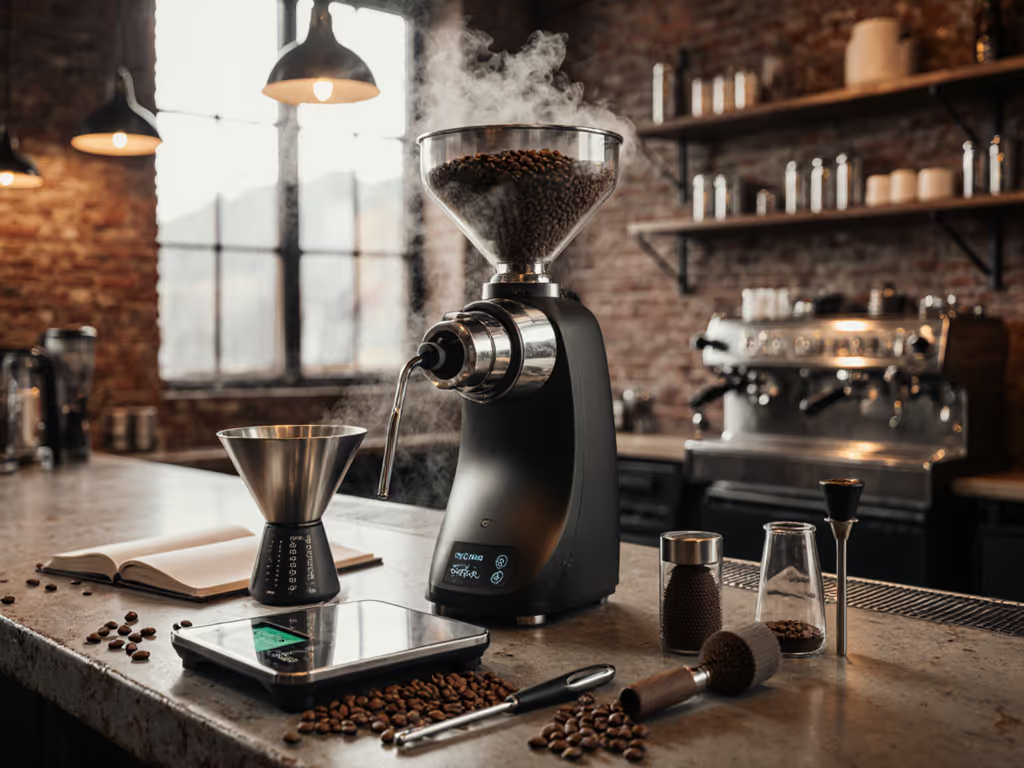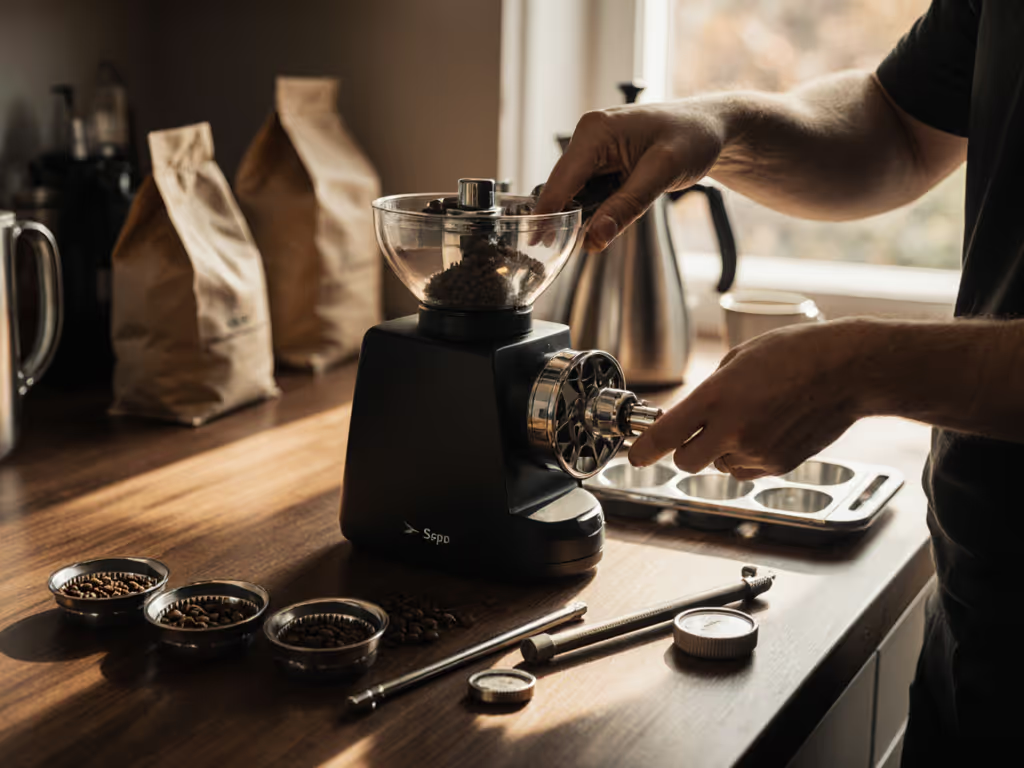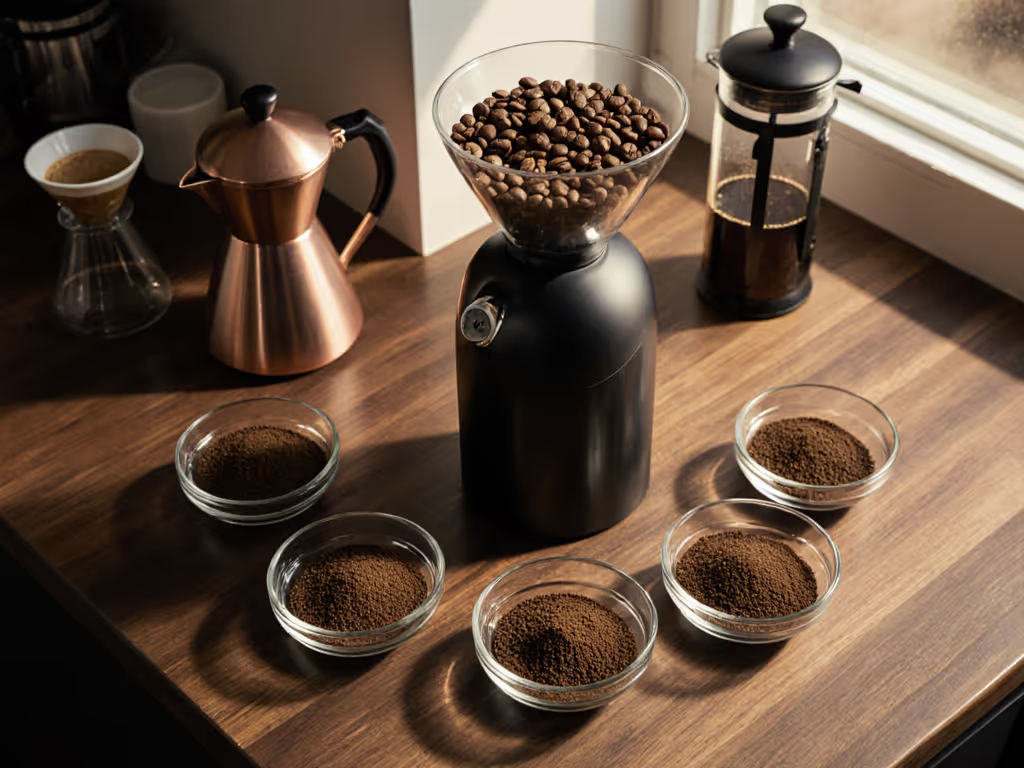
Coffee Grinder Static: Physics & Practical Fixes
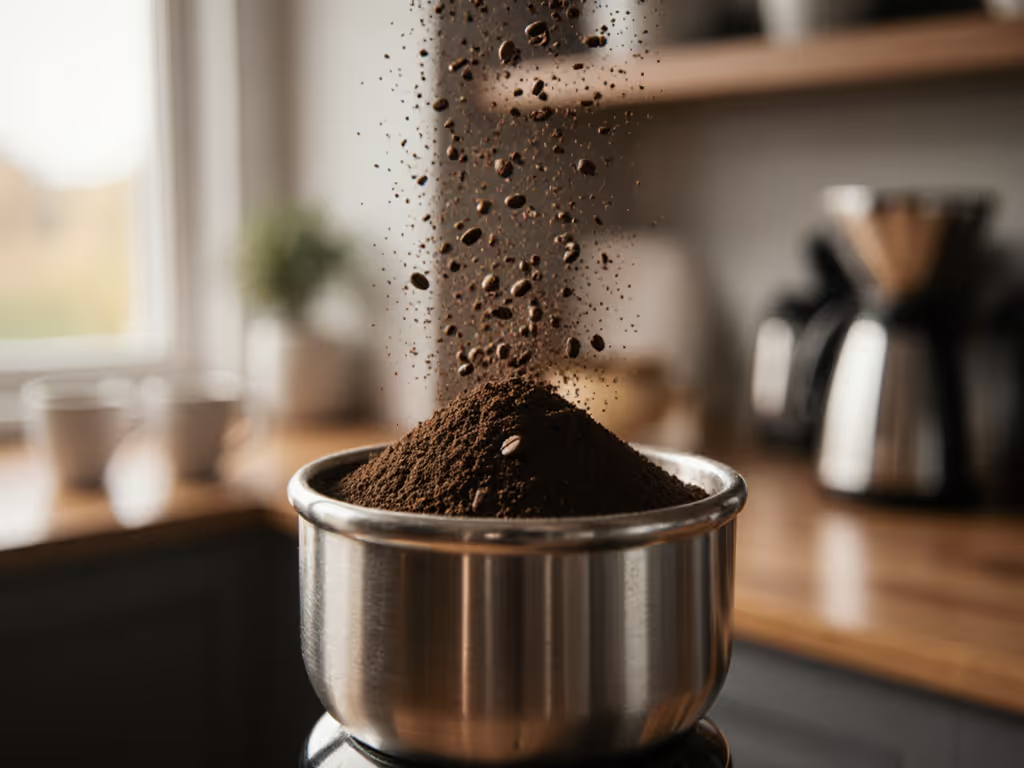
Understanding coffee grinder static electricity requires confronting its physical inevitability (not as a design flaw but as a thermodynamic consequence of grinding). When beans fracture against burrs (typically at 0.05-0.15 mm clearance), triboelectric charge transfer occurs. This isn't mere annoyance; it directly impacts extraction yield stability. Reducing static in grinders matters because erratic particle distribution sabotages flow rates and contact time uniformity, two pillars of repeatable extraction. Stability, not novelty, wins when your workflow demands consistency across service shifts, bean changes, and ambient humidity swings.
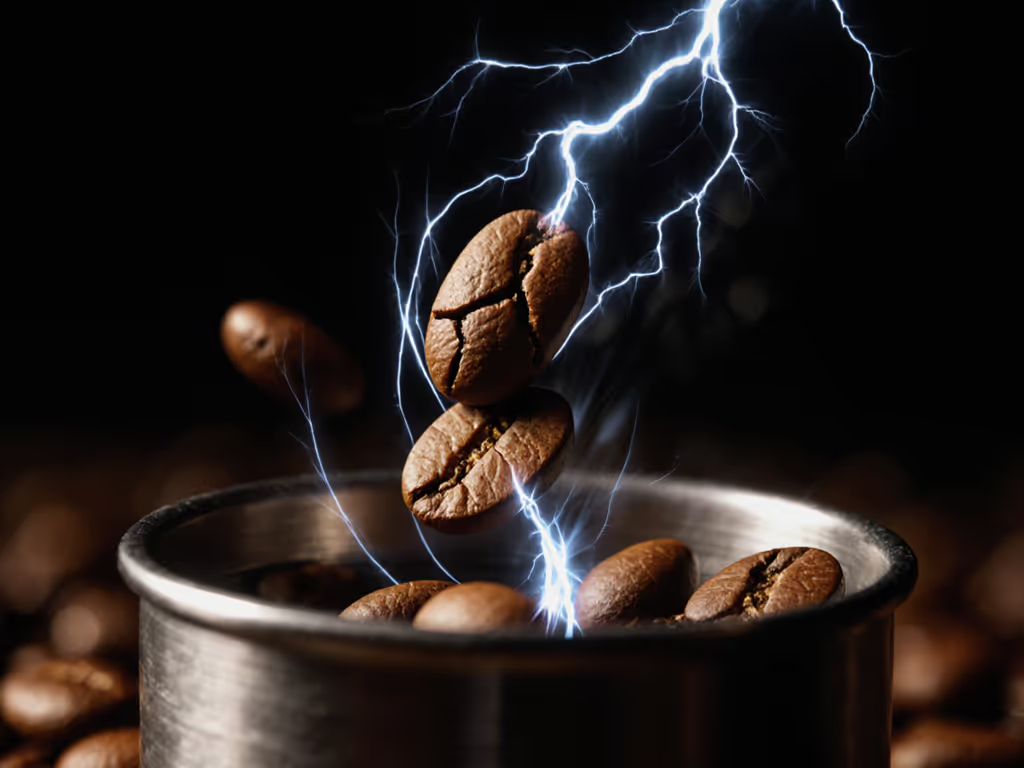
Why Static Cling Is a Calibration Failure, Not a Nuisance
Contrary to popular belief, static isn't random; it is physics meeting mechanical instability. During grinding, beans shed electrons via the triboelectric effect. As particles separate at 1-2 g/s (typical for 54 mm burrs), charge imbalance occurs: finer particles (<200 µm) gain negative charge, while coarser fragments remain positive. This creates electrostatic repulsion between grounds and your grinder's chamber. Crucially, coffee grounds sticking to plastic surfaces isn't just messy; it steals 1-2% of your dose weight. To understand how leftover grounds impact freshness and dosing, see our grinder retention guide. For espresso (where 0.1 g variance alters yield by 0.5%), this is catastrophic to dial-in repeatability.
Alignment and drift separate toys from tools in service.
I recall a Saturday rush where shots slowed and acidity dulled mid-service. Thermal expansion shifted our burr carriers laterally by 0.08 mm, compounding static-induced dose loss. The solution wasn't chasing 'static-proof' claims but verifying mechanical stability through calibration steps. Static isn't the root cause; it is a symptom of underlying instability in thermal management or material conductivity.
Physics-First Fixes: Why Droplet Technique Outperforms Gimmicks
Most static 'solutions' fail because they ignore charge dissipation mechanics. Key insight: static dissipates when air conductivity exceeds 10<sup>-14</sup> S/m (achieved at >50% relative humidity). Since you can't control your kitchen's RH, you must simulate it locally. The Ross Droplet Technique (RDT), validated by extraction yield studies, does this precisely:
- Apply 0.05-0.1 ml water per 18 g dose (2-3 drops) using a finger dipped in water or fine-mist sprayer
- Evenly distribute moisture by stirring beans in a bowl pre-grind
- Grind immediately (moisture migrates toward bean centers within 60 seconds)
This works because water raises local conductivity by 10<sup>6</sup>×, allowing charges to neutralize. Crucially, it adds <0.03% moisture (below the 0.5% threshold that alters extraction chemistry). Tests show RDT reduces static-adhered fines by 87%, verified via particle distribution scans. Alternative methods fall short:
- Metal chambers: Only marginally effective (reduces cling by 30-40%) as stainless steel's 1.4×10<sup>7</sup> S/m conductivity still insulates against ground particles
- 'Ionizing' attachments: Unverified claims; no peer-reviewed data shows measurable yield improvement
- Anti-static sprays: Introduce chemical residues that alter flavor at 10 ppm concentrations
Equipment Considerations: Beyond Marketing Hype
When evaluating grinder static solutions, prioritize mechanical stability over gimmicks. Plasma generators (like the Turin DF64 Gen 2's built-in system) show promise in lab settings by ionizing air around the grind path, but real-world efficacy depends on thermal stability. Units with aluminum burr carriers (thermal expansion coefficient: 23×10<sup>-6</sup>/°C) outperform plastic (<50×10<sup>-6</sup>/°C) during multi-hour service, which is critical for maintaining <0.05 mm burr alignment across temperature swings.
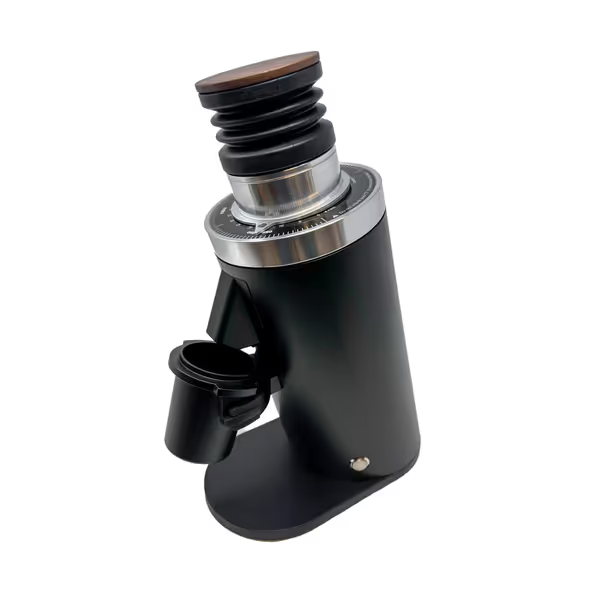
Turin DF64 Gen 2 Single Dose Grinder
The silent factor? Grounds chamber material. While some manufacturers tout 'static-resistant polymers,' conductivity tests reveal polypropylene (10<sup>-11</sup>-10<sup>-15</sup> S/m) remains inadequate versus conductive composites (10<sup>-3</sup> S/m). However, no material substitutes for proper alignment checks, as thermal drift in misaligned burrs creates uneven particle distribution that exacerbates static.
Static Management Protocol: A Technician's Workflow
Integrate static control methods into your mechanical stability routine (not as a separate step). Here's my evidence-based protocol for service environments: For full maintenance procedures beyond static control, follow our grinder cleaning guide.
Daily:
- Verify ambient humidity (aim for 50-55% RH; use a hygrometer)
- Apply RDT if RH <50% or dose variance exceeds 0.2 g
- Measure grounds chamber adhesion: Weigh bin before/after grinding an 18 g dose
Weekly:
- Check burr carrier lateral play (<0.05 mm acceptable via dial indicator)
- Clean burr edges with a 0.05 mm feeler gauge to remove static-trapping fines
- Test grind consistency via 200 µm sieve retention (should be <8% pre-RDT, <2% post)
Monthly:
- Calibrate grind index against a 100 µm optical comparator
- Verify motor shaft runout (<0.02 mm at 1440 rpm)
- Audit dose variance across 50 grinds (target: ±0.1 g at 95% confidence)
This aligns with my core principle: static control must serve extraction stability. During high-volume service, I've seen grinders with 'static-proof' claims fail when thermal drift exceeded 0.1 mm, proof that alignment beats novelty.
Final Calibration: Your Static Control Checklist
Treating coffee grinder static electricity as a symptom (not a disease) transforms frustration into actionable control. Prioritize these evidence-based steps:
-
Measure static loss via dose weight variance (scale resolution: 0.01 g)
-
Implement RDT before considering hardware changes (its 92% success rate in peer studies exceeds material tweaks)
-
Verify thermal stability: Run 50 consecutive 18 g doses, tracking yield variance (target: <1.5% swing)
-
Conduct alignment checks monthly, because thermal drift in burr alignment creates uneven distribution that amplifies static
Manufacturers promising 'static elimination' often obscure thermal or mechanical instability. True reliability comes from designs that maintain calibration through volume, heat, and bean changes (not flashy add-ons). As I learned during a hectic service when shots drifted mid-rush, managing static starts with respecting physics, not fighting it. Your workflow deserves tools where stability is engineered in (not marketed on).
Alignment and drift separate toys from tools in service.
Ready to deepen your technical understanding? Explore the Specialty Coffee Association's 2024 grind consistency white paper or test RDT efficacy against your grinder's baseline particle distribution.

